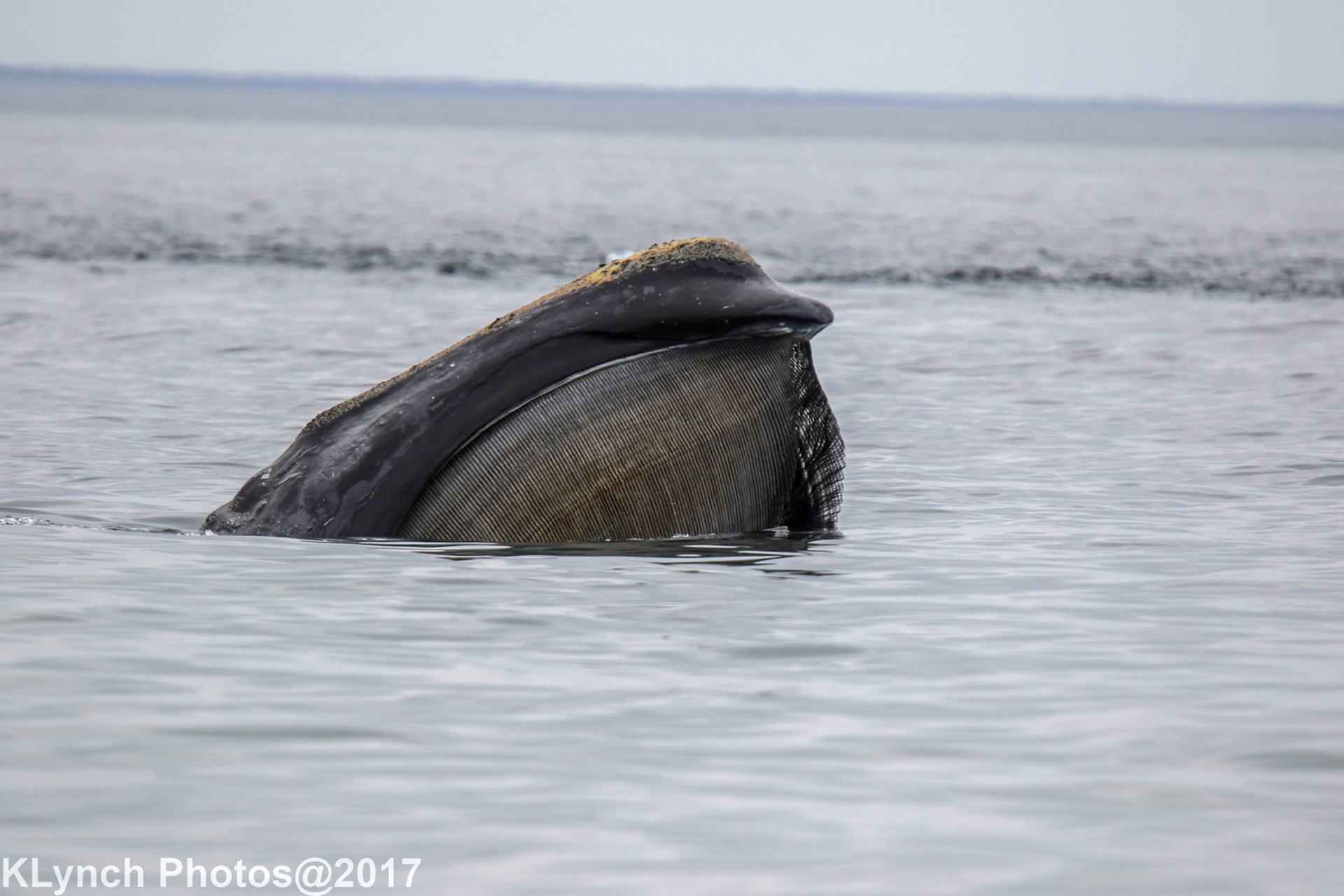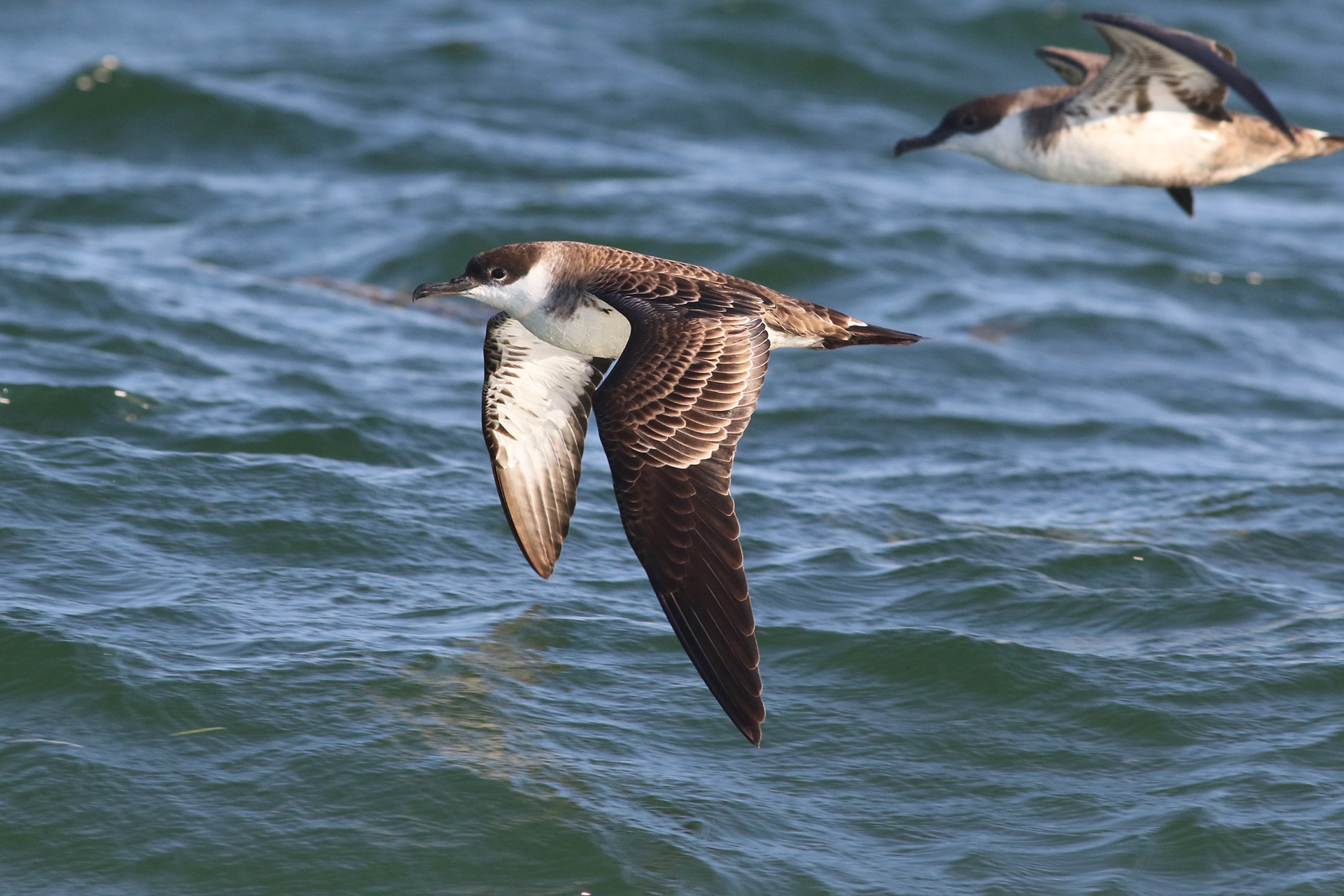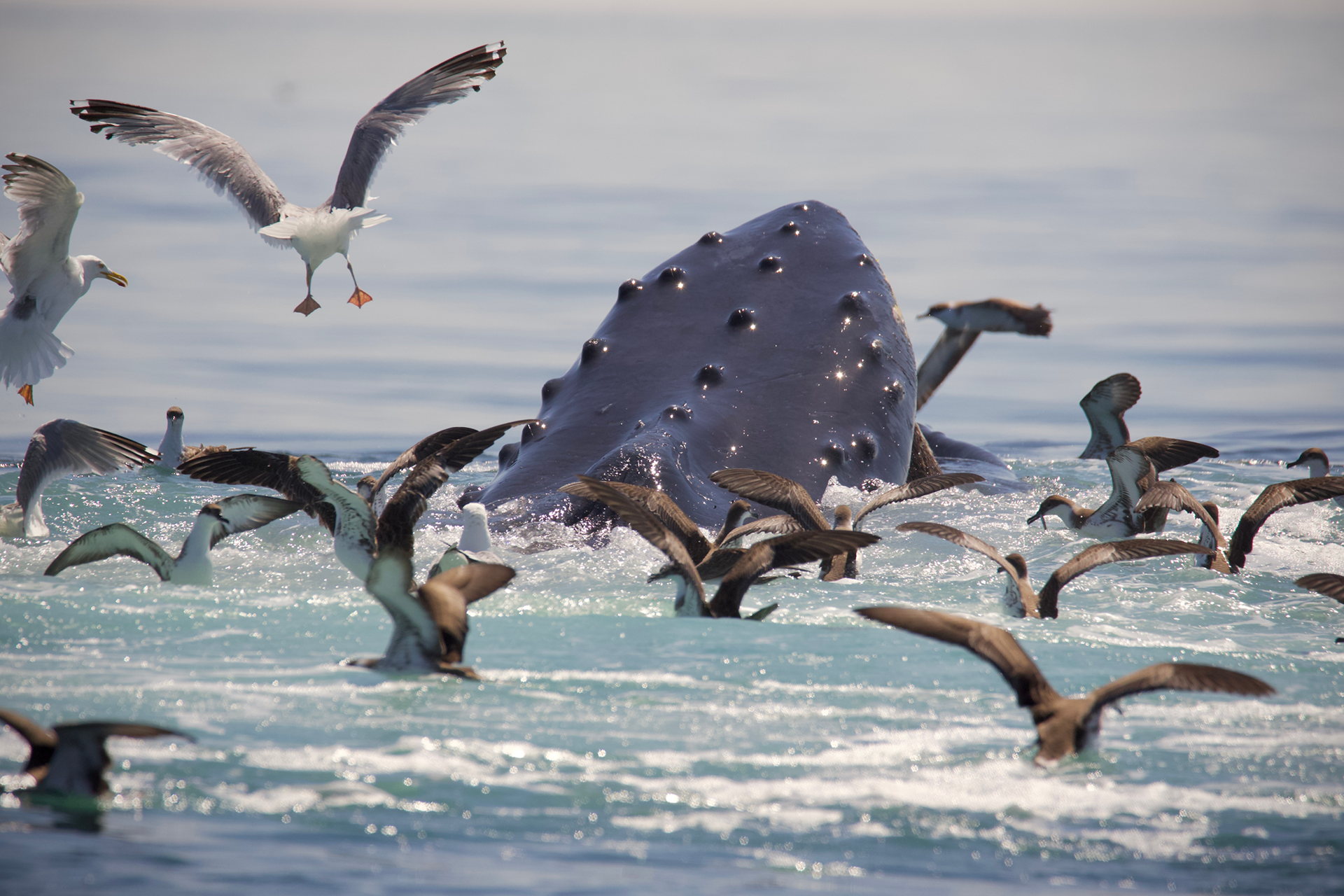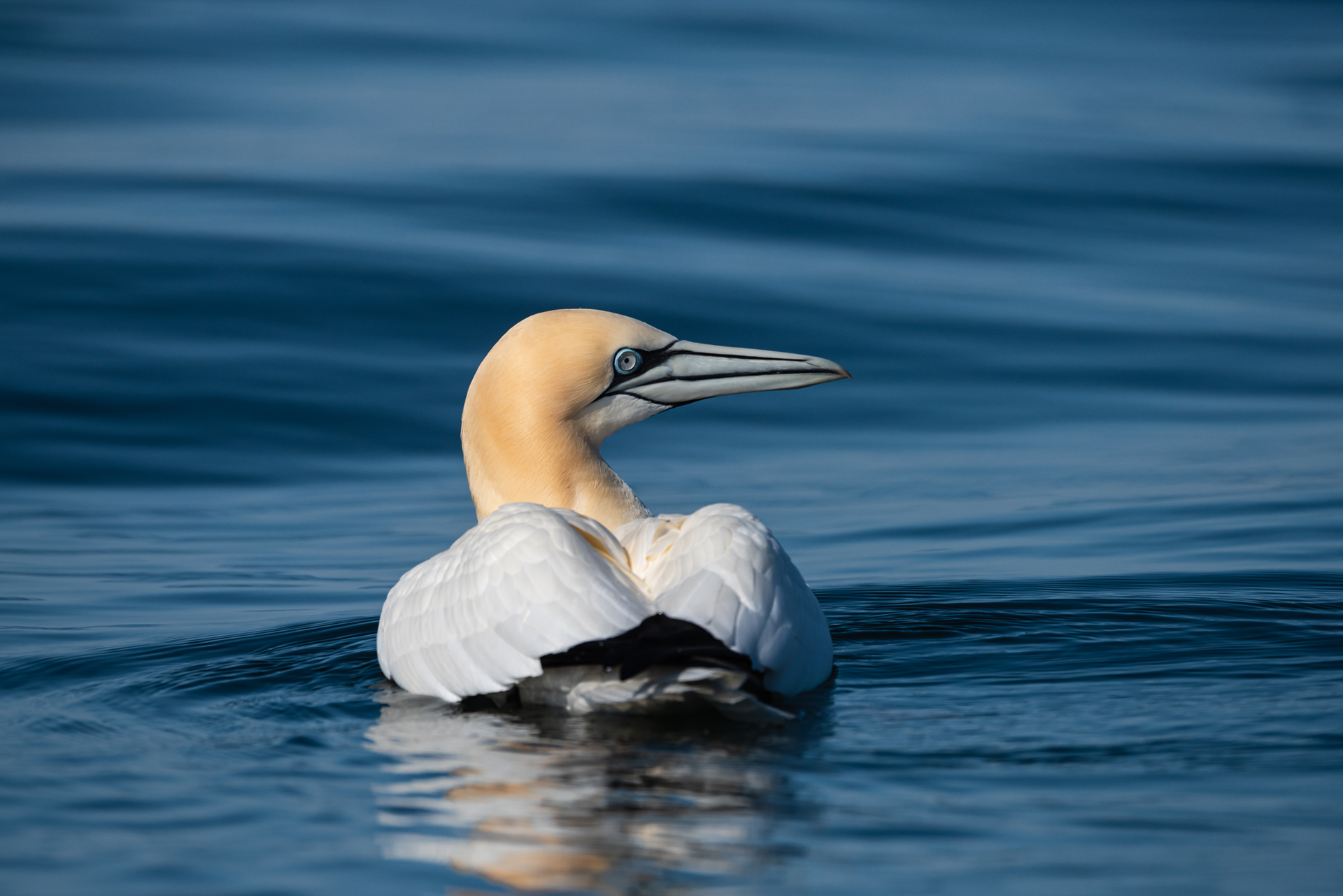Amid the blue darkness, a massive figure rises from the depths. The jaws of a Humpback Whale emerge from the water, full of fish and plankton scrambling to escape. Various birds circle the 40-ton creature, vigorously pecking at the whale’s leftovers. When the whale dives again, the birds linger, waiting for the next meal to be brought to the surface. From spring to fall, people from around the world visit the coasts of Massachusetts for whale-watching.
While whales tend to be the focus point, many birders take these expeditions to watch the symbiotic relationship existing between some of the world’s largest creatures and seabirds.
Whales on our Coasts
Humpback Whales are one of the most familiar species off our coasts, and recognizable by their long white pectoral flippers, ragged tail fluke edges, and knobby surface of their upper jaws. Even though they can reach 45 feet in length, they are not the largest whale in our waters. That honor goes to Fin Whales, which can reach an astonishing 70 feet in length and are the second largest animals on the planet.
Undoubtedly one of the rarest whales to see is the endangered North Atlantic Right Whale. They were once a common species, but by the late 19th century, they were on the brink of extinction from over-whaling. In recent years, nearly three fourths of the world’s North Atlantic Right Whale population travel through Massachusetts waters in the late winter and spring.
Right, Fin, and Humpback whales all have baleen instead of teeth for feeding. Baleen is composed of rows of comb-like curtains of keratin that allow these whales to filter-feed on tiny organisms like plankton from gigantic mouthfuls of sea water.
Enough Food to Feed a Whale
Although whales are sometimes social creatures, they do not usually “hunt” together. Occasionally people are lucky enough to see Humpback Whales use a technique called bubble net feeding. This begins when a mysterious series of bubbles in a circular formation disturbs the calm ocean surface. As more bubbles form, they trap small baitfish within the bubble corrals. Then two or more Humpback Whales swim upward through the middle of the bubble cloud, lunging out of the water with open mouths to capture the fish trying to escape the ring of bubbles.
When they are alone, Humpback and Fin whales typically feed on small fish by swimming with open mouths through schools of fish beneath the surface. Right Whales, on the other hand, are skim feeders that plow through clouds of plankton on the surface with their mouths wide open. In all three whales, dense baleen traps the food as the whale moves forward.
Here Come the Seabirds
When any of these whales are feeding on the surface, they are usually not alone. Shearwaters, storm petrels, jaegers, Northern Gannets, and alcids such as Razorbills and Common Murres are frequent flyers to the fresh bait fish or plankton buffet. This is a form of commensalism, in which one species directly benefits from another without impacting its host, which in this case is the feeding whale. The whales benefit the birds by giving them access to fish, and the birds hardly impact the whales.
Cory’s, Great, and Sooty shearwaters are not well adapted for graceful deep diving. They dip underwater and swim with their wings to pursue their meal, whether brought up by feeding whales or thrown overboard from nearby working fishing boats.
Unlike the shearwaters, Common Terns and Northern Gannets can take a much steeper and deeper plunge. Starting high in the air above the schools of fish pushed up by the whales, terns and gannets circle above their prey before diving head-first into the water. They can dive about 20 inches, but this is deep enough to catch a fish in their beaks.
Wilson’s Storm-Petrels take an approach similar to Right Whales: they skim the surface in their quest for plankton. These small but tough little seabirds can hang in the wind, making them almost look like they are walking on water, while they rapidly dip their beak into the surface water. Other times they fly to the water and scoop up plankton from the surface.
Importance of Whales and Seabirds
Whales are helpful in maintaining a biodiverse marine ecosystem. They help regulate and balance food chains by eating thousands of pounds of plankton or fish and excreting nitrogen-rich fecal matter that plankton recycle for nutrients. Plankton and other microorganisms that photosynthesize help take carbon out of the atmosphere. When a whale eats these tiny organisms, it stores carbon in its own fat along with other needed body substances. New studies have shown that whales store tons of carbon in their lifetime and play a role in carbon sequestration in the deep ocean.
Seabirds are also critical to the environment. The excretions left by seabirds at breeding colonies are full of nitrogen and phosphorus, which provide vital nutrients for coastal vegetation and marine plankton. Plants in Arctic regions especially rely on the nitrogen brought by seabirds since the element is relatively scarce among the low temperatures and dark days of polar winters.
Climate change is potentially one of the greatest threats facing whales and seabirds. Warming waters change the timing of yearly plankton blooms, affect the mating activities of fish, increase habitat loss, and decrease prey populations. By supporting climate change solutions and practicing sustainable fishing, we can help protect the survival of many whale and seabird species.
Seeing Whales and Seabirds
From April through October, you have a chance of seeing whales or seabirds by simply hopping on a whale watch boat at any port in Massachusetts, from Newburyport to Provincetown. The boats will take you far enough off the coast, often near Stellwagen Bank, to where whales and seabirds are frequently spotted. Remember to bring a pair of binoculars to help you spot seabirds and whales on the horizon.
Every summer, Mass Audubon and various other organizations offer public whale watches out of ports on the North Shore, South Shore, and Cape Cod.
This article was featured in the Spring 2023 issue of Explore, Mass Audubon's member newsletter.
Stay Connected
Don't miss a beat on all the ways you can get outdoors, celebrate nature, and get involved.






